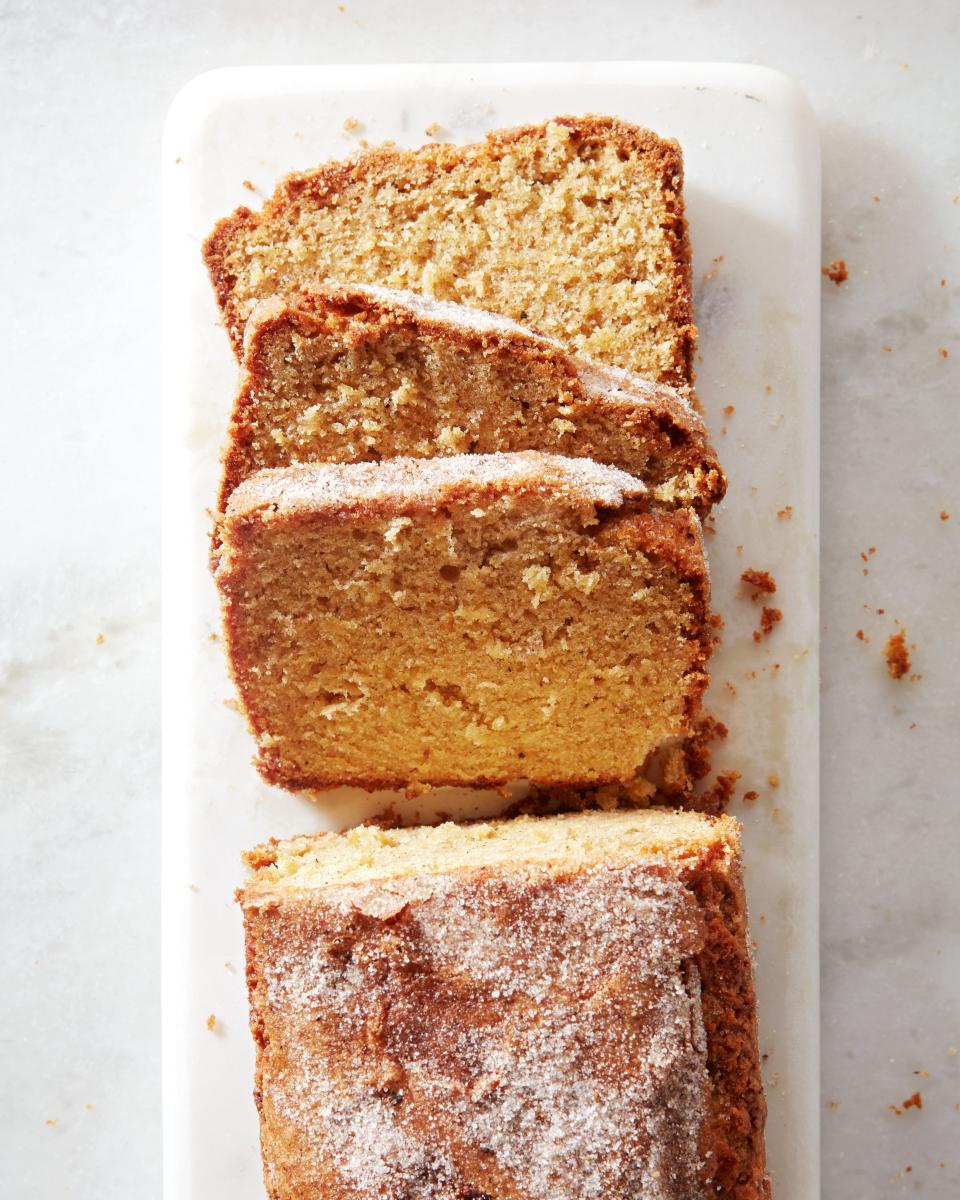Olive Oil Is Better for Cake Than Butter. There, I Said It.
To pit butter versus olive oil is something only an idiot would do. Butter is classical, olive oil is jazz, and anybody who thinks that one is better than the other is not somebody I want to hit the town with.
So why I have spent the better part of a month haunted by the conviction that olive oil is superior for cakes?
It’s probably just a phase I’m going through. But while I’m here, let's flesh this argument out. First there's the flavor. Where butter is sweet, milky, and often in the background of a cake’s flavor, olive oil is earthy, grassy, and bold. An olive oil cake will always have a savory edge, sometimes even a backnote of bitterness, that a butter cake will lack.
Next: texture. Olive oil cakes are the world’s moistest, and unlike their butter brothers, which are constantly at risk of drying out, they stay moist for days. Which brings us to another benefit of olive oil cakes: longevity. “I think olive oil cakes kind of get better with age,” says Elizabeth Quijada, the pastry chef at Abraço, a New York City coffee shop that is known for their olive oil cake. “It’s at its prime at three or four days.”
If I’m being honest, though, none of the superiorities described above are what has put me on Team Olive Oil. Instead, there’s a fourth reason, especially for a person like me who tries to keep himself in cake at all times. I’m talking about the speed and ease in which olive oil cakes come together.

Apple Olive Oil Cake - IG - v1
But this is a controversial point, as I discovered when I was developing my own olive oil cake, a tea cake that packs in cinnamon, cardamom, ginger, and two full apples. Mine is a one-bowl cake that starts with mixing the sugar and eggs vigorously, until the mixture lightens in color and gets thick and ribbony. Then, more slowly, I whisk in the olive oil. Finally, I fold in the flour as gently as I can.
My colleagues in the Epicurious test kitchen challenged me on this. You cannot do an olive oil cake in a bowl, some said. You need to aerate the batter! they yelled. So we tested the cake a few different ways, including beating the eggs and sugar for several minutes in a stand mixer, until the batter achieved ribboning. (All that egg beating creates air, which helps give the cake lift.)
The olive oil cake was fine that way, it really was. But I found that a vigorous whisking job can achieve ribboning just as well. And I couldn’t help but feel that an olive oil cake made in a stand mixer is trying to be something it’s not. An olive oil cake is simple. It is unfrosted, undecorated, and eaten out of hand, at any time of day. A good olive oil cake should be able to be made at a moment’s notice, even if there are people in your kitchen drinking wine and watching you cook. A stand mixer kills an olive oil cake’s vibes.
Not all the pros are with me on this; my friend, the excellent baker Claire Saffitz, calls for a mixer in this olive oil cake. But Quijada, who has been making olive oil cake every day for the past twelve years, is on my side. “Anything with oil, I always hand mix,” she says. “I think for cakes in general, the less you touch it, the better it’s going to be.”
The only time she uses a stand mixer, she says, is when the cake calls for a fussier ingredient: butter.
Olive Oil Apple Cake with Spiced Sugar
Originally Appeared on Epicurious


